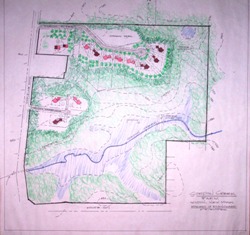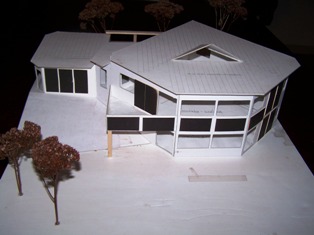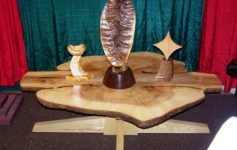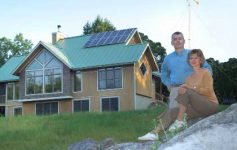By David DeLozier

The current housing crisis has got many people rethinking the idea of how we should live in the world of the future. The old adage of “bigger is better” has proven unsustainable in many ways. Cookie cutter McMansion neighborhoods are attractive looking out the car window, but the lifestyles in these “Wysteria Lane” clones can leave the residents desperate for something more. Many people are looking for ways to live more affordably and self sufficiently, in harmony with their surroundings. There is a grass-roots movement of people out to create what is being called “Intentional Communities.” Not the communes of the 60’s heydays, but a new type of neighborhood where people are integrated to the land and with each other, working together in a partnership to enhance the whole to create a dynamic living arrangement. In an intentional community, a part of the design is the gathering places that provide opportunity to meet your neighbors in natural ways – Common Gardens, meeting spaces, exercise trails, and shared activities.
Such a community is forming just 2 miles from the center of Ballston Spa, by local developer and architect, Robert Blanchard. Blanchard has a new neighborhood concept that starts with a cluster of eleven smaller footprint (1,100-2,500sf) single family homes, three duplexes, and a Bed and Breakfast Inn, to be strategically situated on sixty acres. “The homes will be on a southern facing slope and will feature a passive solar design,” explains Mr. Blanchard. “These homes will be super-insulated (R-28 walls, R-60 roof) and use healthy renewable building materials. Add Energy Star appliances, solar hot water, hydronic solar Heating System and photovoltaics to produce electricity and the energy impact will be nearly zero.” The site also has the potential to capture power from flowing water and wind. The Gordon Creek flows through the property, and could easily be configured to accommodate a pond and turbine to create electricity for the neighborhood.
Each homeowner will enjoy their one acre and share about thirty five acres of commons through a homeowners association. “This will not be idle land,” says Blanchard. “All owners will be encouraged to grow their own fruit and vegetables. Classes will be offered in biodynamic gardening with safe, natural techniques.” Mr. Blanchard has even thought of an innovative roof water capture system for use in the gardens and elsewhere. Ultimately, the goal is to create a blend of self-sufficiency and shared effort that makes for strong bonds and friendships.
This will be a great place to live, with woods, meadows, and a stream with marshes, already abundant with wildlife. The clustering of houses leaves the natural areas open and accessible to the neighbors with a variety of hobbies and interests.
Not content with just designing another ‘green” home, Mr. Blanchard wants to create a home free of toxicity. “Suffice it to say there will be only natural materials in these homes,” explains Blanchard. “That means real wood, no glued products, like plywood that can off-gas noxious particles. There will be triple glazed windows and doors, hourly air exchanges, no PVC piping, and natural ventilation through a central clearstory.” For allergy sufferers and those with chemical sensitivities, this type of home could quite literally be a lifesaver.

These houses will sell for about the same dollar per square foot of space as a typical standard-built new home. One doesn’t need to spend any more for health and energy independence. Using local, natural materials, capturing the energy from the sun and falling water, and building with the land, not just on it, Blanchard hopes to inspire other s to follow his lead. “We just need this kind of sustainable community to live in,” said Mr. Blanchard. “I’m hoping this will inspire people to ask for these kinds of homes so that more developers will provide them.”


